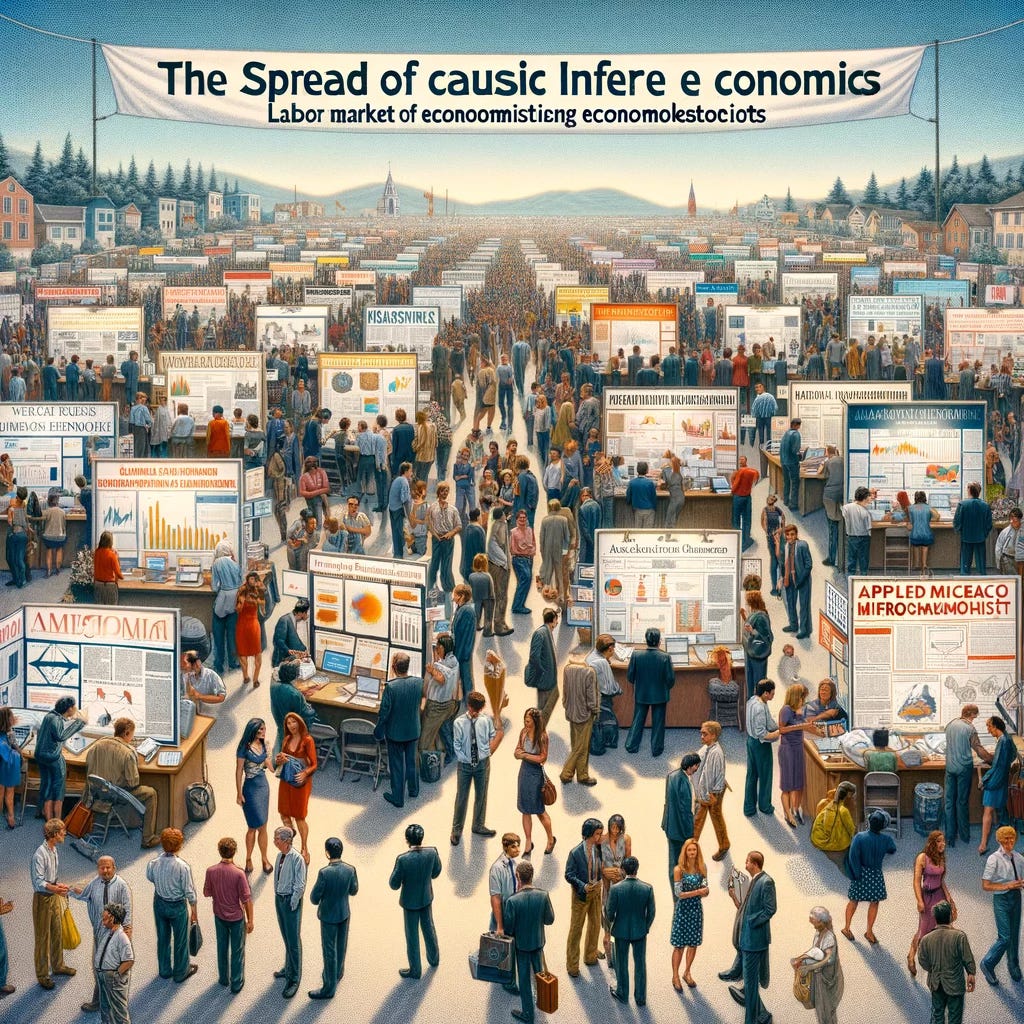Causal Inference, Sorting and Segmented Labor Markets
What if the way causal inference spread through the field of economics wasn't through textbooks, or even econometrics classes, but through a dynamic and less visible labor market assigning new PhDs to teach departments’ micro field courses? This is not just a question; it's a conjecture I'm exploring. This won’t be the full substack about it; this is really just to try and make the conjecture salient and clear.
I believe that in the late 20th and early 21st centuries, causal inference, a methodological form of ex post program evaluation devoid of economic theory almost entirely, became the lingua franca of empirical work because of assistant professors assigned to teach field courses. Ordinarily we think empirical practice happened downstream from econometrics. But I believe this wasn’t the case with causal inference. Its spread happened through the labor market for applied microeconomist placements, their syllabi for field courses in public, labor and development, and in time their jobs as editors, their work as referees, and over time, a paradigm shift. The paradigm shift was largely through replacements of one kind of labor/public/health economist for another, not through the replacements of one kind of econometrician for another. These labor markets favored economists trained in applied fields like labor, public, development, and health economics – fields where causal inference was gaining traction, not just as a method but as a preferred lens to view economic phenomena.
Keep reading with a 7-day free trial
Subscribe to Scott's Mixtape Substack to keep reading this post and get 7 days of free access to the full post archives.



